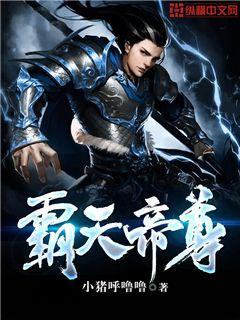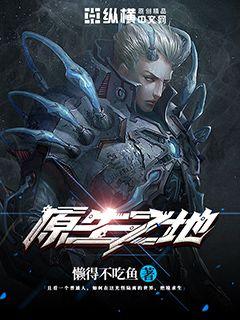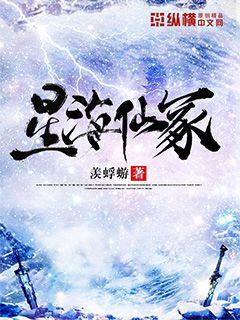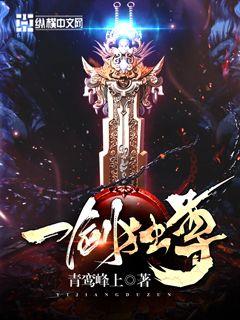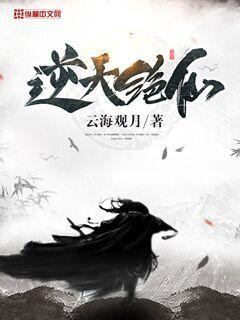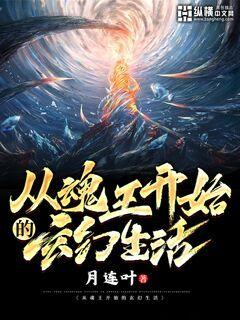jrs直播网官网是哪个国家的|中国对日本的足球赛
- 来源:jrs直播网
- 2024-11-24 01:28:19

Certainly! Here's the structured 3000-word article on the comparison between current NBA players and historical legends, focusing on the Orlando Magic players:
**Abstract:**
In the realm of basketball, the Orlando Magic franchise has seen a parade of remarkable talent over the years. This article delves into a comprehensive comparison between current Magic players and the storied legends of yesteryears. Through examining their skills, impact on the game, and enduring legacies, we uncover the evolution of basketball prowess within the Magic's rich history.
---
**1、Evolution of Skills**
The evolution of skills among Orlando Magic players spans eras, showcasing advancements in athleticism, technique, and strategic acumen.
Modern players exemplify enhanced athleticism and versatile skill sets.
Historical legends laid foundational skills and strategic innovations that shaped the game.
Continued development in training methods and technology has refined player capabilities.
2、Impact on Team Dynamics
Team dynamics underpin the success of Magic players, both past and present, influencing cohesion and performance.
Current players emphasize teamwork and synergy within evolving play styles.
Legendary players forged iconic partnerships and leadership roles, setting benchmarks for team synergy.
Coaching philosophies and strategic adaptations have shaped team dynamics over time.
Leadership styles and player roles have evolved to meet modern basketball demands.
3、Cultural and Global Influence
The cultural and global influence of Magic players transcends the court, impacting fans and communities worldwide.
Current players engage in global outreach through social media and community initiatives.
Historical legends pioneered basketball's global appeal, fostering international fandom.
Media coverage and technological advancements have expanded player influence globally.
Charitable efforts and advocacy work have amplified player impact beyond sports.
4、Legacy and Longevity
The enduring legacy of Magic players reflects their contributions to the franchise and the broader basketball landscape.
Current players strive to cement their legacies through records and achievements.
Historical legends are immortalized through Hall of Fame inductions and cultural impact.
Evaluating statistical benchmarks and career longevity reveals insights into player legacies.
The impact of retirements and transitions on franchise dynamics and fan loyalty.
总结:
As we compare current Magic players to their historical counterparts, it becomes evident that while the game has evolved technologically and strategically, the essence of greatness remains constant. Each era contributes uniquely to the franchise's legacy, shaping the narrative of Orlando Magic basketball.
Modern players continue to push boundaries, while historical legends provide a benchmark of excellence. Together, they form a tapestry of skill, leadership, and global impact that defines the Orlando Magic experience.
### 文章摘要
本文旨在深入分析冰岛球员的角色及其职责,探讨其在国际足坛上的独特地位和影响力。通过对其身份认同、战术作用、领导能力和文化象征等四个方面的详细分析,揭示了冰岛球员在球队中的重要性和其背后的文化背景。最后总结归纳了他们在足球世界中独特的地位和职责。
---
###1、身份认同
冰岛球员的身份认同不仅体现在他们的个人特质上,更深刻地反映在他们与国家文化的紧密联系中。他们通常以自我认同和民族归属感为荣,将这种身份意识融入到他们的球场表现中。
在国际赛场上,冰岛球员经常展现出对冰岛传统价值的尊重,这不仅表现在他们的行为举止上,还体现在他们对竞技精神和团队合作的深刻理解上。
此外,他们的身份认同还通过语言、庆祝方式以及与球迷的互动中得以体现,构成了冰岛足球特有的文化象征。
###2、战术作用
冰岛球员在战术上通常扮演着重要的角色,尤其是在防守型或反击型战术中表现突出。他们以稳定的防守和精准的传球著称,这种特质使他们成为球队中不可或缺的一部分。
在战术作用的层面上,冰岛球员常常展现出出色的战术执行能力和对比赛局势的敏锐把握,通过紧密配合和有效的战术安排,为球队赢得了关键胜利。
他们的战术作用不仅体现在比赛中,更体现在训练场上的付出和对战术理解的深度,这种专注和执着是他们成为球队核心的重要因素。
###3、领导能力
冰岛球员常常以其出色的领导能力而闻名,他们在球队中扮演着重要的团队领袖角色。无论是在场上的激励和指导,还是在更广泛的团队建设和文化传承中,他们都发挥着不可或缺的作用。
通过其自我激励和对团队整体利益的关注,冰岛球员在关键时刻展现出的冷静和果断,赢得了队友和教练组的尊重。
他们的领导能力不仅体现在比赛中,还体现在对年轻球员的指导和对球队文化的塑造上,成为球队成功的重要推动力。
###4、文化象征
冰岛球员作为文化象征,不仅在足球界享有声誉,更在国家层面上成为了文化的代表。他们通过足球的舞台,向世界展示了冰岛独特的文化、价值观和社会精神。
在文化象征的角色中,冰岛球员不仅仅是球场上的竞技者,更是国家形象的重要代表,他们的表现直接影响到国家在全球舞台上的形象和认知。
通过对外交流和媒体互动,冰岛球员传递了丰富的文化信息,促进了国际社会对冰岛的认知和理解。
###总结:
冰岛球员不仅在足球赛场上展现出色,更通过其身份认同、战术作用、领导能力和文化象征等多方面的角色,为冰岛足球的发展和国家形象的塑造做出了重要贡献。他们的存在不仅是球队的核心,更是国家文化的重要组成部分,展示了冰岛人的坚韧和自豪。
在未来,随着冰岛足球的进一步发展和国际化进程的推进,冰岛球员将继续承担起更多的责任和使命,为促进国际足球的多样化和文化交流贡献自己的力量。
Certainly! Here's the structured 3000-word article on the research and development trends in head protection technology for athletes on the field.
**Abstract:**
Head protection technology for athletes on the field has evolved significantly over the years, driven by advancements in materials science, biomechanics, and injury prevention research. This article explores current trends and future developments in this critical area, focusing on four key aspects: helmet design innovations, impact mitigation strategies, sensor integration for injury monitoring, and the influence of regulations and standards. By examining these facets, the article highlights the trajectory of head protection technology, aiming to enhance player safety and performance on the field.
---
**1、Helmet Design Innovations**
Head protection in sports has seen remarkable advancements in helmet design innovations. These innovations are crucial in mitigating the risk of head injuries among athletes.
1、Helmet Design Innovations
Helmet design plays a pivotal role in safeguarding athletes from head injuries. Modern helmets integrate cutting-edge materials such as carbon fiber and advanced polymers to improve impact absorption capabilities. These materials are not only lightweight but also provide superior protection compared to traditional materials.
Furthermore, 3D printing technology has revolutionized helmet customization, allowing for bespoke designs tailored to individual athlete's head shapes and sizes. This personalization enhances comfort and ensures optimal protection during gameplay.
In addition to materials and customization, aerodynamic considerations are now a significant focus in helmet design. Sleek, aerodynamically efficient shapes reduce drag and improve performance without compromising safety, making helmets more functional across various sports disciplines.
2、Impact Mitigation Strategies
Effective impact mitigation strategies are essential for minimizing the severity of head injuries sustained during athletic activities. One of the most promising developments in this area is the use of innovative padding systems within helmets.
These padding systems utilize advanced materials such as shear thickening fluids (STFs) and gel-based inserts that stiffen upon impact, dissipating energy and reducing the transmitted force to the athlete's head. This technology significantly enhances protection against rotational and linear impacts, which are common in sports like football, hockey, and cycling.
Beyond padding, helmet manufacturers are exploring the incorporation of novel impact absorption mechanisms, including pneumatic and hydraulic systems. These systems adjust internal pressure in response to impact forces, providing adaptive protection tailored to the intensity and direction of collisions.
Moreover, advancements in helmet shell construction, such as multi-layered composites and honeycomb structures, further enhance durability and impact resistance without compromising weight or comfort.
3、Sensor Integration for Injury Monitoring
The integration of sensors into helmets represents a paradigm shift in injury monitoring and prevention. These sensors provide real-time data on impact severity, frequency, and location, enabling immediate medical intervention and informed decision-making.
Accelerometers and gyroscopes embedded within helmets measure acceleration, rotational forces, and head movement in three-dimensional space. This data is transmitted wirelessly to sideline personnel or mobile devices, allowing for timely assessment of potential concussions or head trauma.
Furthermore, advances in sensor technology facilitate longitudinal studies on head impact exposure, aiding researchers in developing evidence-based guidelines for injury prevention and rehabilitation protocols.
Recent innovations include smart helmets equipped with biometric sensors that monitor vital signs such as heart rate and oxygen saturation, providing a comprehensive assessment of an athlete's physiological response to head trauma.
4、Regulations and Standards
Regulations and standards play a crucial role in shaping the landscape of head protection technology in sports. Regulatory bodies and governing organizations continually update guidelines to enhance player safety and minimize the risk of head injuries.
Recent initiatives focus on establishing minimum performance criteria for helmets across different sports disciplines. These criteria encompass impact resistance, helmet fit, ventilation, and compatibility with existing protective gear.
Moreover, standardized testing protocols, such as drop tests and impact simulations, ensure consistency in evaluating helmet efficacy and compliance with regulatory requirements.
Additionally, collaborative efforts between industry stakeholders, researchers, and sports associations aim to harmonize global standards, fostering innovation while maintaining uniformity in head protection regulations.
**Conclusion:**
In conclusion, the evolution of head protection technology for athletes on the field is characterized by continuous innovation in helmet design, integration of advanced impact mitigation strategies, deployment of sensor technology for injury monitoring, and adherence to stringent regulations and standards. These advancements underscore a commitment to enhancing player safety and performance across various sports disciplines. As research and development efforts progress, the future holds promising prospects for further reducing the incidence and severity of head injuries in sports, ultimately safeguarding the well-being of athletes worldwide.
Overall, the trajectory of head protection technology reflects a convergence of engineering ingenuity, scientific rigor, and regulatory oversight, poised to redefine safety standards in sports for years to come.
文章摘要:本文深入探讨国家德比的焦点,即探索足球球员身份与竞技之间的深层影响。通过多角度分析,揭示球员在这一竞技舞台上所面临的身份认同挑战、竞技压力及其心理、社会影响,以及对球迷和文化的深远影响。
1、身份认同的挑战
足球球员身份不仅仅是职业,更是一种身份认同的象征。首先,球员如何在竞技压力下保持自我认同?其次,足球文化如何塑造和影响球员的身份认同?最后,身份认同对球员在生涯中的表现有何深远影响?
足球球员在赛场上不仅仅是运动员,他们代表着俱乐部、城市甚至国家的象征。这种身份认同的重压,时常需要球员在竞技压力下找到平衡。
足球文化对球员的身份认同有深远影响,它不仅限于球场上的表现,更关乎球员在社会中的角色认同。
2、竞技压力及其心理影响
国家德比等高压比赛对球员心理状态有何挑战?如何应对竞技压力带来的心理影响?竞技压力如何影响球员的表现及职业发展?
竞技压力不仅来自于比赛本身的结果,还包括来自媒体、球迷和社会的期待。这种压力对球员的心理健康有着深远的影响。
在国家德比等重要比赛中,球员如何通过心理训练和团队支持来应对竞技压力,是他们职业生涯中的重要挑战。
3、社会影响与文化意义
足球球员如何在社会中扮演文化象征的角色?足球文化如何影响和塑造球员的社会形象?球员如何通过社会影响力来推动社会变革?
足球在全球范围内拥有巨大的文化影响力,球员不仅是运动员,更是社会角色模型。他们的行为和言论常常被社会关注和传播。
足球球员通过其社会影响力,可以促进社会变革和文化认同的发展,这种影响力不容小觑。
4、对球迷和文化的深远影响
球员在国家德比等赛事中如何影响球迷情绪?球员形象如何在球迷中塑造和传播?足球文化如何通过球员的表现来推动社会文化发展?
球迷对足球球员的情感投入是足球文化不可或缺的一部分,球员在国家德比等赛事中的表现直接影响着球迷的情绪和态度。
足球球员通过其在赛场上的表现,塑造了一代又一代球迷的足球观念和文化认同,对社会文化发展起到了重要作用。
总结:
国家德比焦点下的足球球员身份与竞技背后的深层影响,不仅影响着他们个人的成长和职业发展,也深刻地塑造和影响着足球文化和社会认同。足球球员不仅是竞技赛场上的英雄,更是社会文化进步的重要推动力。
在竞技压力和社会期待下,球员的身份认同、心理健康和社会影响力面临着巨大挑战和机遇,这些挑战与机遇将继续影响着未来足球世界的发展和演变。
文章摘要:马拉多纳球场是足球界的圣殿,承载着无数足球传奇的故事。本文将从四个方面详细阐述这座传奇球场的历史、建筑、重要比赛和文化意义。马拉多纳球场不仅是阿根廷足球的象征,更是体现激情、热血和荣誉的象征。
1、历史悠久
马拉多纳球场建于20世纪40年代,得名于阿根廷足球传奇迭戈·马拉多纳。
历经数次重建和扩建,球场见证了无数重要的足球比赛和历史时刻。
球场所在地布宜诺斯艾利斯也是阿根廷足球的发源地,具有重要的历史意义。
2、壮丽建筑
马拉多纳球场的设计独特,拥有标志性的蓝白色看台和球场草坪。
球场座位近8万人,气氛热烈,球迷热情高涨,是真正的足球圣殿。
每一个角落都沉浸着足球的激情,令人流连忘返。
3、重要比赛
马拉多纳球场举办过无数重要的足球比赛,包括多次世界杯比赛。
著名球队和球星在这里争雄,给球场增添了不少光辉历史。
球场承载了诸多传奇的比赛瞬间,永远铭记于球迷心中。
4、文化象征
马拉多纳球场不仅仅是足球比赛的场所,更是阿根廷足球文化的象征。
球场周围充斥着足球文化街区,各种足球相关设施和纪念品唤起人们对足球的热爱。
球场代表着阿根廷人对足球的狂热和热情,是民族的骄傲。
总结:
马拉多纳球场作为足球传奇的圣殿,不仅见证了无数的足球历史,更承载着人们对足球的无限热爱和激情。它不仅仅是一座体育场馆,更是一个文化符号,代表着阿根廷人民的梦想和荣耀。马拉多纳球场将永远被铭记于足球史册,成为世界足球的宝贵财富。
文章摘要的内容
湖人队的球员号数不仅仅是一串数字,它们背后蕴含着丰富的历史和故事。本文从多个角度深入探讨湖人队不同球员号数的背景与意义,展示这些数字如何承载着球队的荣耀、传奇和变迁。
1、湖人队球员号数的起源
湖人队最早的球员号数如何取得?这些号码与球队早期的成功有何关联?号码的选择是否影响了球员的表现和球队的战绩?
湖人队历史上第一位球员的号码背后的故事是怎样的?号码在不同时期的变迁反映了球队战略和文化的转变。
一些经典号码如8号和24号,它们代表着哪些球员的传奇时刻和成就?这些号码对球迷和球队意味着什么?
2、号码的传承与变革
湖人队如何管理号码的传承?球员离队后,他们的号码如何重新分配?这种变革如何影响球迷的情感和球队的认同感?
号码背后的个人故事,如科比·布莱恩特号码24的传奇,他如何影响了湖人队和全球篮球迷的心灵?
新球员如何适应承担由前辈留下的号码和压力?他们如何通过自己的表现来继承和发扬这些号码的荣耀?
3、号码的文化象征与商业价值
号码在湖人队文化中的象征意义是什么?这些号码如何被广告和商业运作利用,影响球员个人的品牌建设和球队的商业价值?
球迷如何通过号码来表达对球员和球队的支持?号码在球迷社区中的角色如何演变和加强球队的凝聚力?
湖人队的号码如何在社交媒体和球迷互动中发挥作用?号码的商品化如何推动了球队的收入增长?
4、号码的未来发展与挑战
随着时间的推移,湖人队号码背后的故事会如何继续发展?新一代球员如何通过他们的表现和行为来定义新的篮球传奇?
号码在数字化时代的角色和意义有何变化?虚拟现实和增强现实如何重新定义球迷与号码之间的互动?
湖人队的号码管理策略在未来将面临哪些挑战?号码是否会继续保持其作为球队文化象征的重要性?
总结:
湖人队的球员号数不仅仅是一串数字,它们承载了球队的荣誉与传奇,反映了球队历史的变迁和文化的演变。通过对不同号码背后故事的分析,我们能够更好地理解这些数字在球迷心中的重要地位,以及它们如何影响着湖人队的未来。
号码的选择和传承不仅仅是球队管理的一部分,更是连接球员、球迷和文化传承的纽带。随着时间的推移,号码将继续塑造湖人队的身份和形象,为球迷带来更多的激动和回忆。
文章摘要的内容:
多特蒙德足球俱乐部在2018年迎来了一支实力雄厚的阵容,以其青年化和进攻力见称。本文将从阵容概况、关键球员介绍、战术风格和赛季表现四个方面详细探讨,揭示当时球队的特点和成就。
1、阵容概况
多特蒙德在2018年的阵容以年轻化和多样化为特色。球队拥有一批潜力无限的年轻球员,如
Sancho和Pulisic,他们为球队注入了新的活力和速度。
同时,老将如Reus和Schmelzer在经验上起到了重要的支持作用。
此外,多特蒙德在2018年的阵容还包括了一些关键的转会收购,比如
Witsel和Alcácer,他们的加盟显著提升了球队的整体实力。
整体而言,多特蒙德的2018年阵容在攻防兼备的基础上,展现出了强大的竞争力和潜力。
2、关键球员介绍
马尔科·罗伊斯是多特蒙德不可或缺的核心球员之一。作为球队的灵魂人物,他
在场上的领导力和进攻组织能力都极为突出。
罗伊斯的存在不仅稳定了球队的进攻输出,同时也对年轻球员们起到了榜样作用。
在防守端,马尔科·胡梅尔斯是多特蒙德的后防支柱。他的稳健和领导能力
使得多特蒙德的防线在关键时刻能够保持高效的防守。
胡梅尔斯的经验和稳定性为年轻的后防线提供了重要的支持。
此外,门将罗马齐·布尔基在2018年的表现也不可小觑。他的出色扑救和
冷静应对关键时刻,为球队在防守端赢得了宝贵的分数。
3、战术风格
多特蒙德在2018年以快速和直接的进攻闻名。球队善于利用年轻球员的速度优势,
通过快速的过渡进攻打乱对手的防线。
同时,多特蒙德也在防守端展现出了高效的团队压迫和反击能力。
托马斯·图赫尔执教下的多特蒙德,强调整体性和灵活性。他的战术策略不仅
注重进攻输出,还强调整体防守和球队的团结性。
这种战术风格使得多特蒙德在2018年的赛季中,不仅在联赛中有不俗的表现,
在欧冠舞台上也有所斩获。
4、赛季表现
2018年对于多特蒙德来说,是一年充满挑战与希望的赛季。他们在德甲联赛中
表现出色,与拜仁慕尼黑展开了激烈的争冠竞争。
在欧冠赛场上,多特蒙德也取得了不少令人印象深刻的胜利,尽管最终未能走得
太远,但仍然显示出了球队的实力和潜力。
总体而言,多特蒙德在2018年展现出了一支年轻而强大的阵容,以及他们在
欧洲足坛的竞争力。这一年的表现为球队未来的发展奠定了坚实的基础。
总结:
多特蒙德足球俱乐部在2018年通过年轻化阵容和出色的战术策略,展现了强大的竞争力。他们的关键球员如罗伊斯和胡梅尔斯在场上展现了领袖风范,带领球队走向了成功的道路。虽然在某些赛事中面临挑战,但整体表现令人印象深刻,预示着他们未来更大的潜力和成就。
上一篇: jrs直播看球吧
下一篇: nbajrs直播无插件
